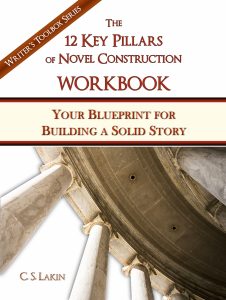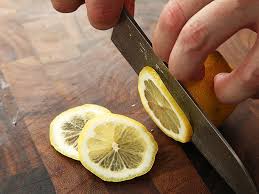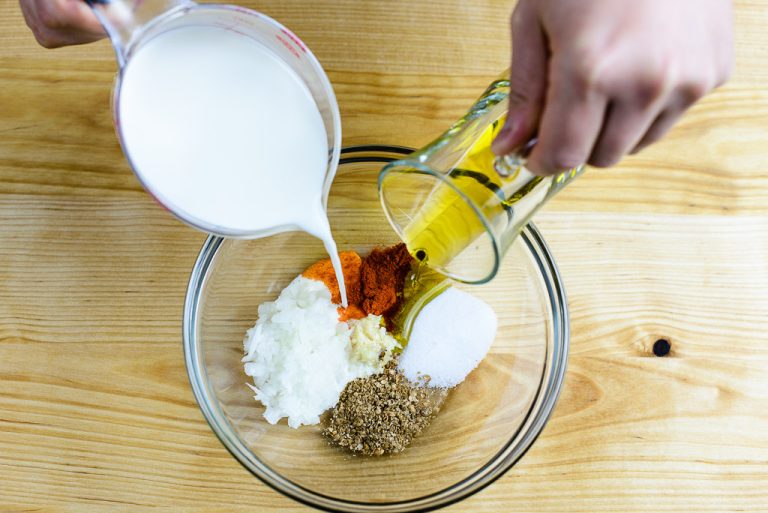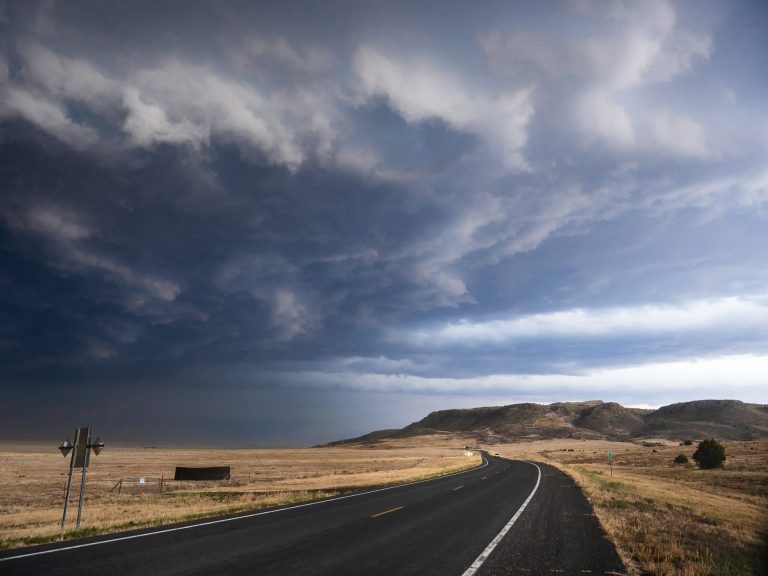Layering 20 Scenes to Create a Strong Romance Novel
Last week I probably overwhelmed you by showing you how to integrate the key romance scenes into your foundational ten scenes. This post is a long one too.
Yes, it can be a daunting—but fun!—process to layer in your scenes.
But listen, folks—writing a novel is hard. You can do it the really hard way or you can smooth out the path and make way easier. The hard way is to wing it—go ahead and waste months of your life. I can write a novel in about a month if I plot it out carefully. You can too.
If you are clear about your ten key scenes and have them in their approximate place, you’ve done the hard work of getting the big rocks in the jar. Those pebbles can fit into all the spaces between the rocks. You may have to jiggle the jar a bit to get them to settle in, but that’s part of the process.
We took a look at how you could structure your novel by layering in a complementary subplot with ten additional scenes to make the 10-20 in my 10-20-30 Scene Builder concept. I’ve mentioned that those next ten scenes can really vary. It all depends on the approach you want to take and the genre you are writing in and which POV.
Layering Scenes in a Romance Novel
In the last couple of weeks you’ve seen how romance novels have a very specific structure and story engine. That’s another framework you can use to help you have solid structure for your story.
So this week, I’m going to show you how useful this method is. I’ve just started writing my next installment in my Front Range series—historical Western romance set in Colorado in the 1870s. When I began brainstorming this novel a couple of weeks ago, I decided to go straight into using this method and started with my ten key scenes.
I first, of course, worked out my basic plot idea, my themes, key characters, opposition and high stakes. The goal for the book is always clear in a romance novel—the girl wants to get the guy or vice versa despite obstacles and forces keeping them from getting together.
I shared Michael Hauge’s “Lover’s Journey” list of key scenes, which I’ll again utilize in this post.
So once I had all the basic components I needed, I began laying out those ten scenes.
One thing I’d like to add: in a romance you might not have a clear opposition or antagonist for those pinch points. Instead, you might have a situation creating conflict or making it hard for the lovers to connect. It could be a past issue, some emotional block or problem. But at those pinch point locations, those will be triggered and will rear up to create distance.
So don’t get too hung up on the specifics. Just try to understand the way conflict and tension gets introduced and exacerbated to build to a strong climax. Which is all about the hero/heroine trying to reach the goal.
The story in Colorado Dream centers on a heroine whose dream is to become a principal violinist in the NY Phil and a hero, a rough-and-tumble troubled cowpuncher, whose gift is breaking wild horses.
As intrinsic to romance novels, the two are as different as can be, yet they are perfect for each other. They both land in Colorado—she’s there to buy a violin from a master instrument maker in Greeley, and he arrives half-dead after being chased and shot at and running from trouble.
Like a wild horse, my hero is untamable, restless, unable to find peace due to heavy guilt hanging around his neck. Yet, when my heroine plays her violin, he is strangely calmed. And the more he fights her magical spell, the more entangled he becomes, and of course falls in love.
The horse whisperer meets the cowboy whisperer. Or something like that.
The Key to Success Lies in the Subplot
In order to have a strong story, I needed a strong subplot. For, in my opinion, the best romance novels are all about the subplot.
What do I mean? Well, the main plot is the “guy meets girl, guy gets girl.” In other words, the romance story is the main engine driving the story, which is what I explained last week. But while that in itself may have interesting and original components due to the character types and background issues, what really makes a great romance is a subplot that works to create the opposition, heighten the stakes, prevent the lovers from getting together.
Strong subplots can be the source of misdirection, twists, complications, setbacks, and all sorts of great novel elements.
I talk about this at length in a future post, so let me just say this: subplots usually aren’t directly related to the main plot. They’re a side plot with either the main character or another character (or both). You can get confused with the definitions here, so while my “subplot” isn’t a true subplot based on that definition, it is a strong plot thread that provides the pinch points and deals with the opposition. I hope that makes sense.
I came up with a basic subplot that is set in motion before the novel starts. In fact, moments before the first scene with my hero, whom I’m calling Buck for the moment. Buck was at a cowboy competition (precursor to what we now know as rodeos) and as he was readying to leave, he saw a rich rancher’s son trying to rape a woman. He interfered and a fight ensued, followed by the chase scene that is shown in his first scene.
What Buck doesn’t know is that in their conflict, after Buck is shot in the leg, his return shots have hit his pursuer and caused him to fall and smash on the ground, leaving him paralyzed. This sets off an enraged father whose goal is now to find Buck and make him pay—with his life.
A good subplot, as I showed in the earlier post on the topic, will build just as the main plot builds, and at the climax of the novel will also build to a strong climax, and then will resolve either at the climax or shortly after.
Let’s grab the 20-scene structure I shared with you last week. I’ll plug in my story’s proposed scenes into this chart in boldface (remember the scenes marked with R are the layered romance scenes):
#1 (also R1) – Setup. Introduce protagonist (HEROINE) in her world. Establish her core need. Set the stage, begin building the world. New York: Angela tries to sneak off to the train station to leave for Greeley to get her violin. Mother tries to dissuade. Father chases after the train. Establish her father’s violence and that her mother will no doubt suffer from helping Angela leave.
#11 – R1 – introduction of HERO. This is the match to the first essential scene. It may not be the second scene in your novel. Buck is being chased by three guys, shot at, hits the open range of CO, shoots back, gets lost in a dust storm, wanders the desert, has to shoot injured horse, dying of thirst in the heat. Gets found by Greeley doctor and taken to his house.
#2 – Turning Point #1 (10%): inciting incident. This incident moves the heroine into position for the meet (a move to another location, an event, etc.). Angela in Greeley at the violin maker’s house. Buck is next door recovering. They are positioned to meet.
#12 – R2 – The Meet. Buck hears her play violin at night. He’s very moved, goes outside. They meet, but there is friction because he fights the attraction and power of her music. She finds him crass and uncouth.
#3 – Pinch Point #1 (33% roughly): Give a glimpse of the opposition’s power, need, and goal as well as the stakes. This is the full setup of your subplot, against which your lovers face conflict, opposition, and obstacles. Introduction of subplot! We see the rich rancher, Orlander, angry that his son has been paralyzed. He sends his men out to search for Buck to kill him. He is lied to about what happened.
#13 – R4 – Wise Friend Counsels: Again, this can be, and often is, scenes with both the hero and heroine. They can each have a mentor/ally/wise friend character that gives them advice regarding their love life and/or pushing them to consider the potential love interest. Both hero and heroine have a “wise counselor.” The doctor helping Buck recover helps land Buck a job at big rancher Logan’s cattle company outside of town. Angela finds a mentor in the kind violin maker (recently widowed)—the father she wished she had.
#4 – Twist #1: Something new happens: a new ally, a friend becomes a foe. New info reveals a serious complication to reaching the goal. Buck gets the job at the ranch but is immediately at odds with two of the hands. Sets up antagonist that will align with Orlander’s men to kill Buck at the climax. Angela gets a job at the same ranch to teach violin to Logan’s three young daughters. This twist brings them together but also creates problems. Set up allies for Buck—cowboys at the ranch he helps and encourages. Angela learns her mother was gravely hurt by her father when dragged from the train platform. She is grieved and aunt warns her to stay a while and not rush home to angry father.
#14 – R5 – Acknowledge Interest: A key scene that throws the lovers together so they start getting to really know each other. A first scene of the two lovers spending time together on the ranch. She sees his gift in taming horses. They learn a bit about each other and see how they share violent fathers. She sees he is hiding something (his guilt over his mother’s death at his father’s hand—same situation as hers, in essence). Note: it’s so important to have some key early scenes in which the two lovers start getting to know each other. Too many writers rush their characters into love, which is unbelievable.
#5 – The midpoint (50%): No turning back. Important event that propels the story forward and solidifies the protagonist’s determination to reach her goal. Usually one of the lovers realizes and decides the other is for them, and they will now pursue without letup, despite current obstacles. And at the same time, the other lover may see something that makes him/her decide the relationship is not gonna happen. Buck convinces Angela to go for a ride with him. She’s never ridden before. When they land in a nest of rattlesnakes, Buck goes a bit crazy in killing them. She is afraid of his violent streak (as is he, which is his big fear—that he’ll end up like his violent father). She decides it’s time to go back to NY. The West is too wild and scary. Buck is falling for her but doesn’t know how to win her heart.
#15 – R6 – The First Quarrel: Things start coming to a head and creating high tension with the lovers. Buck hears/sees she is leaving and tries to stop her. She is waiting for money from her aunt to be able to go home. Their differences seem too great to reconcile.
#6 – Pinch Point #2 (62% roughly): The opposition comes full force. Time to buckle down and fight through it. Again, this is further development of the subplot. The nemesis or opposition is going to make it nearly impossible for the couple to get together: nature, mean parents, jealous ex, angry ex business partner. Fight at the roundup when Buck discovers two of Logan’s hands are involved in rustling. They’re fired and are sent off. Connect with Orlander’s men, who’ve arrived in town, following leads to Buck. They team up and plot killing Buck at the big birthday bash at the ranch (climax situation).
#16 – R7 – The Dance of Attraction: The two are again thrown together, and now they are perilously close to falling madly in love. But . . . there are still obstacles (subplot unresolved) and emotional resistance due to fear and doubt and past wounds. Big firestorm across the prairie. Buck and hands are taking horses to the park for a big cowboy event. He helps to save picnickers and Angela and gets them to safety. She sees how self-sacrificing he is in saving others. Not what she expected. His almost losing her makes him realizes how smitten he is.
#7 – Twist 2: An unexpected surprise giving (false?) hope. The goal now looks within reach. A mentor gives encouragement, a secret weapon, an important clue. Events occur to make this romance look possible, giving hope. Angela thinks about staying and making her life here. Buck hears she’s staying.
#17 – R8 – The Black Moment: Then something happens to kill the possibility of a true romance. A misdirection, lie, reversal, misunderstanding. This is a great place to throw that monkey wrench in. Angela mishears and misunderstands someone, thinking Buck killed a man and is wanted. She thinks he’s lied to her. Rejects him. He doesn’t know why.
#8 – Turning Point #4 (75%): Major setback. All is lost and hopeless. Time for final push. Buck seeks her out and tells her the truth, begs her to believe him. She rejects him.
#18 – R9 – The Lovers Reunite: Somehow they find a way to get together despite the huge obstacles. It may be brief, but this is the scene where they admit/realize they both are fated to love each other and profess that love. This is a fun scene because they still can’t unite fully. They are at the ranch party. He hears her play violin and this time lets it reach his heart and wound, which scares him. But now he knows he is in love. They talk, he shares his wound, she realizes she loves him. But their worlds are still apart.
#19 – R10 – Complications Push Them Apart: There is one last big obstacle in their way. Which sends them reeling into the high action and tension of . . . Big fight and shooting scene at the ranch. Orlander is caught, and rancher and Buck are brought before Logan to face off and the truth all comes out.
#9 –(also #20 – R11 – Together at Last) Turning Point #5 (76-99%): The climax in which the goal is either reached or not; the two MDQs are answered. Buck is exonerated. Angela sees he is innocent and a hero, not a villain.
#10 – The aftermath (90-99%): The wrap-up at the end. Denouement, resolution, tie it all in a pretty knot. Angela makes her decision to stay in Greeley and teach music and play with the local opera orchestra. Buck, no longer running, becomes Logan’s foreman of the ranch. The lovers can now be together.
#20 – R12 – The HEA. A final, parting shot of the happy result of the wrap-up. This could be included in the last scene (above) as the two plot elements merge together, or they might be separate scenes within the final chapter(s). A scene in which Angela is playing her violin for him and Buck is wholly at peace, his demons exorcised. Her father has come to see her, apologizes, wants her to be happy and forgive him.
Some of these scenes may get moved around or change as I write, but they give me a foundation to work with, and the writing has begun.
From this, I created a whole lot of other scenes to fill in, like the sand that gets poured into the jar and fills in around the pebbles. Those scenes involve action with secondary characters who serve as key allies to both characters. Plus, I bring in characters from the previous books (since fans clamor to read more about them!).
With an additional ten key scenes, I end up with my 10-20-30 layered scene structure. I like to start a novel once I have about thirty scenes.
I’ll share those next ten scenes with you soon to give you an idea of what that “sand” might look like.
Remember, there are many ways to vary this, but I hope this look at my process—using this structure I’m sharing with you—is giving you lots of ideas. Use the templates! They were created to help you!
And if you need help with your novel at this stage, hire me. Let’s hammer out your key scenes until your framework is strong and ready to support a story. If you aren’t sure yet what those ten key scenes should be, use my 12 Key Pillars of Novel Construction book and the workbook! If you work through all the brainstorming questions and checklists, you’ll get to that solid story.
I put in all that work to create these books for you to save you the time and heartache that comes with floundering confused and lost.
Seriously, too many writers suffer fear and loathing when it comes to writing a novel. You don’t have to. With a bit of work and planning, you can take the pain out, and guess what’s left? The fun!
I love writing novels. I’m on my seventeenth (I think). I could write a novel a month, with all the cool ideas I have simmering in my brain. But alas, I have to work full-time and make a living so I can spoil my adorable grandson.
I want you to love writing too. So give this 10-20-30 Scene Builder method a spin.
Have you been working on layering those scenes? Want me to share yours with my thousands of readers? If so, send me a list of your ten key scenes—for a novel you’re working on or even one you’ve published along with a brief synopsis.
Thoughts? Has this helped you? What do you find is the hardest scene to come up with in this method?












My WIP is broken, so I took your 20-scene list to a cafe last week and tried to fix it – which was in interesting and enlightening experience, particularly as I’ve recently attended an all-day session with Michael Hauge (who kindly pointed out just how broken my WIP is).
Anyway, the attempt at mapping my scenes raised a question:
Your model assumes the author is writing the traditional third-person novel from two (or more) points of view. Mine is first person, with only one viewpoint character.
How would you adjust your 10/20/30 scene list to allow for only one viewpoint?
Hi Lola, as I mentioned, this all works fine for first person. You can still have subplots that complicate your character’s life, and you still would have some key opposition that is going to create problems for her to reach her goal, which you’d showcase in those pinch points. In my novel Conundrum, the conflict with Lisa’s mother provides the pinch points and obstacles. Regardless of what type of POV you use, you still have a protagonist going after a goal, conflict with high stakes, themes, and a strong concept. You might not have a subplot to layer in the way I showed, and that’s fine. You might start with those ten key scenes, and just layer in another ten that bring in the opposition and your protagonist’s reaction and resulting decisions.
It might help you to take a novel or two (best sellers in your genre) that are in first person and write out a brief scene outline as you read through or skim through the book. Then you can identify those ten key scenes, and then take a look at what might be considered the next ten key scenes. This can really help!
An excuse to re-read a novel? I’m in!
Thanks. That’s a great idea, even if it’s one I should have thought of myself.
You said “I’ll share those next ten scenes with you soon to give you an idea of what that “sand” might look like.” Will that “soon” y our talking about be next by any chance? If so, I’m looking forward to seeing how it all comes together. This has been very helpful. I’m a newbie to writing adult romance (contemporary interracial, to be exact. Think Harlequin Blaze)and new to writing in the serial fiction format on my website (real time, not posting a completed novel in parts). I’m also a pantser by nature, so this gives me a way to plot without really freaking out over the fact that I’m plotting something. LOL.
I’m glad this is helping you plot. I’ve said this before: I have yet to EVER read a great novel that was done by the seat of the pants. Lack of careful plotting shows! And the pantsers I know who are successful write so many drafts and waste months of time, eventually “plotting” their novel out through revisions. This is much easier! As far as the sand goes, to put in in general terms: once you have the key scenes in place, there are always the minor developments to deal with (Plots C) and there are the reaction-processing scenes. You have some big incident occur, or some event that changes things (a twist), then there has to be a reaction. The natural process is action-reaction-decision-new action. So often those “sand” scenes fill in those missing processes.
You might deconstruct some of the novels in the genre you’re writing in and do a scene outline. Try to identify those ten key scenes once you’ve summed up every scene in the book. Then identify the next ten most important between those. Then what’s left? You’ll see those are the process/reaction/new decision scenes.
Ack! I forgot to edit that before I sent it. What I wanted to know is if you’re going to be talking about the next 10 scenes next week. 🙂
Hi, no, I’m not. I’m going to be sharing for some weeks a number of charts sent in by writers who’ve taken the challenge to create them. I still have a lot of other ideas to share about the “20” layer. So it may be a while before I get into that last layer of ten.
Newsflash: sometimes in romance the guy wants to get the guy or the woman wants to get the woman. Just sayin’.
That goes without saying. But there needs to be two main characters in the love story, and the structure should follow roughly the same.
This is true the two main characters in the love story are a must….
But, do they need to be in love? heeheehee